In Australia's daily life, we can not leave the everywhere can see the Australian dollar. Different denominations of paper money and coins have completely different avatars and icons, and behind these images, Australia's society and history are recorded. Today, the editor of the China Federation of Nations has come to take a look at the unique background story of Australian currency.
The story of Australian coins
There are six denominations of coins in circulation in Australia: five cents, ten cents, twenty cents, fifty cents, one dollar and two dollars. The front faces of all coins are statues of the Queen of England, while the designs on the back are very distinctive.
Five points
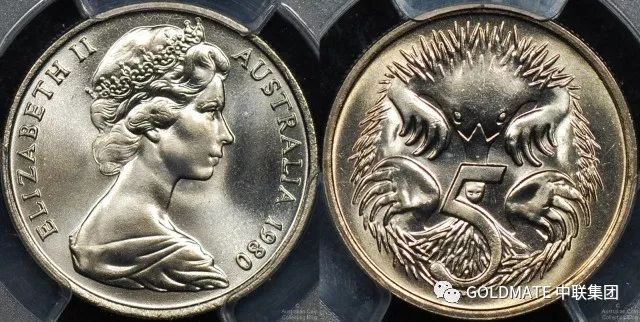
The pattern on the back of the pennies is a rare Australian ecole. The needle mole is a ball of adorable appearance. Ecigna is a close relative to another endemic Australian animal, platypus, and is unique to two species of egg-laying mammals in the world. They breed by laying eggs, hatching their children and then feeding them with milk until they are able to live on their own.
very
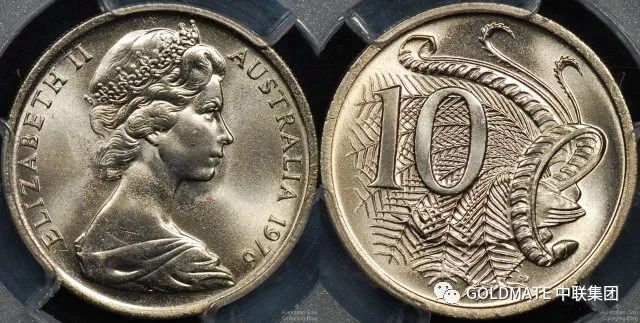
The back of a ten-dollar coin issued by Australia is a bird with a tall tail feather. The male, whose tail feathers resemble the harp of an ancient western instrument, is also a unique Australian animal, so it is known as a harp.
Twenty minutes
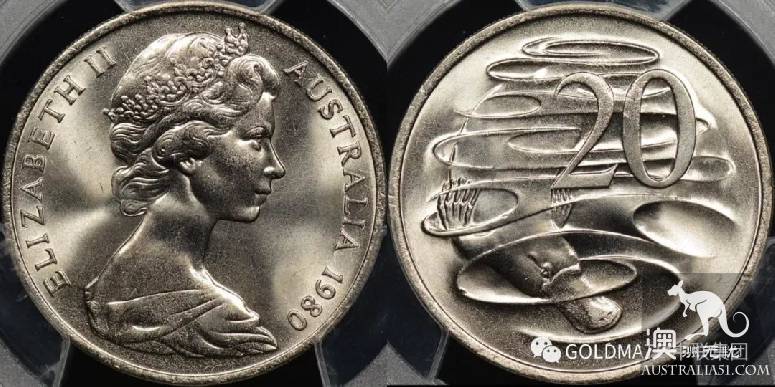
The figure on the back of the twenty-ten coin is a platypus we mentioned earlier. Platypus, like ecmoles, is unique to Australia.
Fifty minutes.
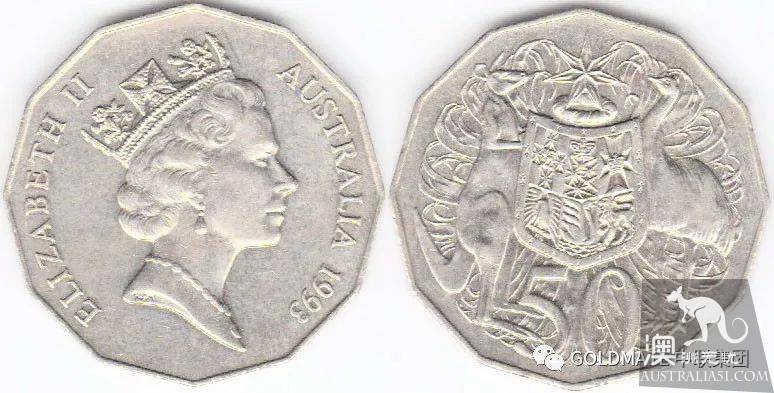
Australian pennies are the largest and heaviest of all coins. The design on the back is Australia's national emblem, the center of which is a shield with six state badges engraved on it, indicating that the six states are United to form the Commonwealth of Australia. A kangaroo and an emu guarded the shield. The background is the national flower of Australia. Australia's unique kangaroo has become a self-evident symbol of Australia, emu, a high-flying but not flying bird is also one of Australia's endemic animals. Fifty cents are the only polygonal coins in all the coins in circulation in Australia, and the others are round.
Aussie dolla
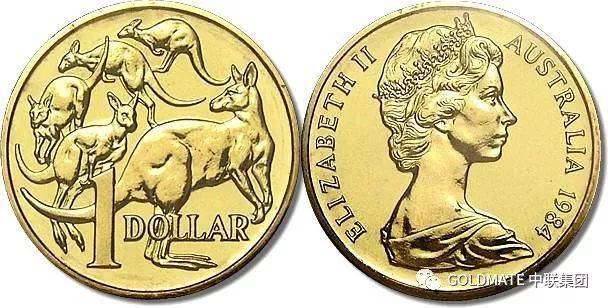
The front of the Aussie dollar coin is also the Queen Elizabeth image, with five kangaroos large and small on the back. Kangaroos belong to the order marsupials and are recognized as a symbol of Australia in the world. Different sizes of kangaroos, kangaroos can be more than two meters tall, small only the size of a mouse. Kangaroos live in Australia all over the country, eating mainly grass and other green plants. Australia began issuing Aussie dollar coins in 1984 to replace the previous Australian dollar notes, which can last up to 30 years because they can only be used for eight months.
Two Australian dollars

On the back of the two Australian dollar coin is a portrait of an aboriginal Australian tribal elder in the background of the Southern Cross and the native Australian herbaceous plants. According to scientists, aborigines have lived in Australia for tens of thousands of years. The use of Aboriginal elders' portraits to cast coins shows Australia's recognition of Aboriginal history and status. Coins of two Australian dollars have been in circulation since 1988 to replace the two Australian dollar notes issued in 1966.
The story of Australian paper money
The avatars on the Australian dollar are different in face value and face value, and the stories of these avatars make up a history.
$100
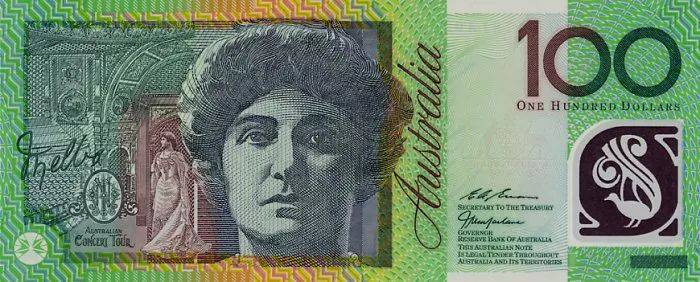

The Australian $100 main color is green, with Nelly Merbah (NellieMelba), a world-renowned Australian soprano singer, born in Melbourne, Australia, on May 19, 1861. Nelly Merbah gave her farewell performance in Australia in 1928. Three years later, she died of a blood infection at the age of 70.
On the back of the A $100 is General John Monash (SirJohnMonash), an outstanding Australian military general in World War I, born in Melbourne, Australia, in 1865, when he was a college student. The first World War broke out in 1914, and in 1916 Monash, who had been promoted to Major General Monash, led the new third Division of the Australian Army to France. The next year he was promoted to the rank of Lieutenant General. On 4 July 1918, General Monash, with his unique tactics, commanded the army to defeat the Germans in the battle of Mount Hamel, winning an extremely important victory for the Allied forces. On 12 August, General Monash was knighted on the battlefield by King George V of England. Since then, General Monash's army has swept through France and won a series of victories as the Allied forces' first strike.
After the war, he retired and returned to civilian life. With his extensive engineering and management experience, he devoted himself to electricity construction in Victoria while providing enthusiastic help to other veterans in rebuilding their postwar lives. He died of illness in 1931.
$50

The A $50 note is mainly yellow and features David Eunai (DavidUnaipon), a famous Australian native writer and inventor born in South Australia in September 1872. A tool he invented for shearing wool was patented. He also invented centrifugal motors, radial wheels and mechanical thrusters.
In 1934, he urged the federal goverment to assume responsibility for the affairs of the indigenous people, as he was also a spokesman for the indigenous people in public life, and he was often called upon to participate in the work of the Royal hearing Committee, which investigates the affairs of the indigenous people, and in 1934 he urged the Federation to assume responsibility for the affairs of the indigenous people. And put forward a proposal for the establishment of a committee on indigenous affairs.
Eunai, who has been a member of the Association of Friends of Indigenous Peoples for many years, has promoted his ideas, indigenous legends and traditions, and "compassionate cooperation" between whites and indigenous people. Advocates that Australians, regardless of colour, should have the same rights.
Eunaibon is the first native writer to publish an article in Australian history. His manuscript of the Legend of Native Man is still preserved in Sydney's Mitchell Library as a valuable source of Australian indigenous history. The manuscript is also pictured on Australia's $50 note. Eunai died in February 1967.
On the back of $50 is (EdithCowan) Edith Cohen, a social worker and Australia's first female MP. Ms Cohen was a prominent advocate of women and children's rights in Australia in the late 19th and early 20th centuries.
In 1861, Cohen was born in an ordinary family north of pace, the capital of Western Australia. As an adult, she was full of sympathy for the unfortunate people around her, especially women and children. Women were not encouraged to receive education at the time, but Cohen understood that women's access to education was an important factor in social change. She joined a women's club called Karakata and later became president of the women's group. Cohen took an active part in the campaign for women to have the right to vote, winning in 1899.
Cohen also paid special attention to the welfare of all women, including prostitutes, arguing that women did not receive adequate medical care. Through her efforts, she contributed to the inauguration of King Edward Ward Women's Hospital in Perth. She also established a child protection group and further facilitated the establishment of a special children's court.
After the outbreak of World War I, Cohen actively collected food, clothing and other useful items for the front-line soldiers. As president of the Red Cross, she was also actively involved in helping the wounded. In 1920, the British Empire awarded her a medal for her tireless work. It was also that year that the Western Australian Parliament passed a bill to allow women to run for Parliament. As a candidate in the West Perth region, Cohen ran for parliamentary seats and eventually won the election, becoming the first woman in Australian history. She died of illness in 1932 at the age of 71.
$20
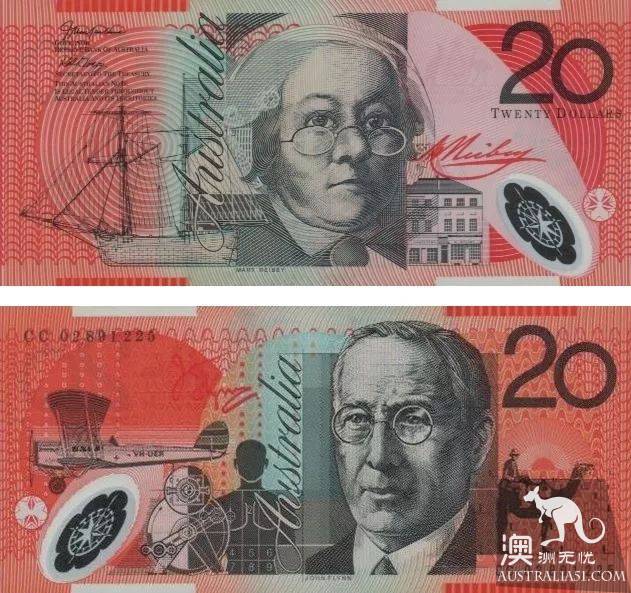
The main color of the $20 note is red, and the real character is Mary Rebecca (MaryReibey)., a shipping tycoon and philanthropist Australia's historic female shipping tycoon and entrepreneur turned out to be a seven-year exiled criminal by a British court.
Mary Rebecca was born in Lancashire, England, on May 12, 1777. Her parents both died at a young age. Her grandmother sent her to a wealthy family as a servant. Mary Rebey fled from a rich man's home and began her vagrant life. In 1791, she was arrested by the police for theft, and the court found her guilty of stealing horses and sentenced her to exile for seven years. The next year, she was escorted aboard a boat carrying exiled prisoners and crossed the sea to New South Wales, Australia.
In September 1794, 17-year-old Mary married Thomas Rebey, a junior officer. In April 1811, Mary's husband, Thomas, died in April 1811, when Mary's husband, Thomas, died in April 1811, when they started farming on land granted by goverment and then began shipping on the Hoxburi River. Mary assumed responsibility for raising seven children and all of her business activities. In 1812, she opened a new warehouse on George Street in downtown Sydney. In 1817, her shipping company bought a new batch of ships and expanded its operations again. By the time she faded out of business in 1828, she had substantial assets in Sydney and Australia.
In 1825 she was appointed director of a private school in Sydney and died of illness at the age of 78 in 1855.
On the back of A $20 is John Flynn (JohnFlynn)., founder of the world's first flying doctor service.
John Flynn was born in Goodfield, Victoria, Australia in 1880. On May 15, 1928, after years of active and hard work by Flynn and his supporters, the Royal Flying Doctor Service was finally introduced.
On May 17, 1928, the Royal Australian Flying Doctor Service aircraft made its first flight in Queensland. The world's first flying doctor, Wilch, flew 50 sorties a year, rescuing 225 wounded and sick and sending the gospel to people on farm farms in remote Australia.
Today, the Royal Australian Flying Doctor Service has 47 aircraft, 96 pilots, 45 doctors and 105 nurses and has established nearly 30 flight bases and ambulance centres in remote areas of Australia. To become a powerful aero-medical service, but also to save the wounded and sick in remote areas throughout Australia.
John Flynn, 71, died of illness in 1951.
$10
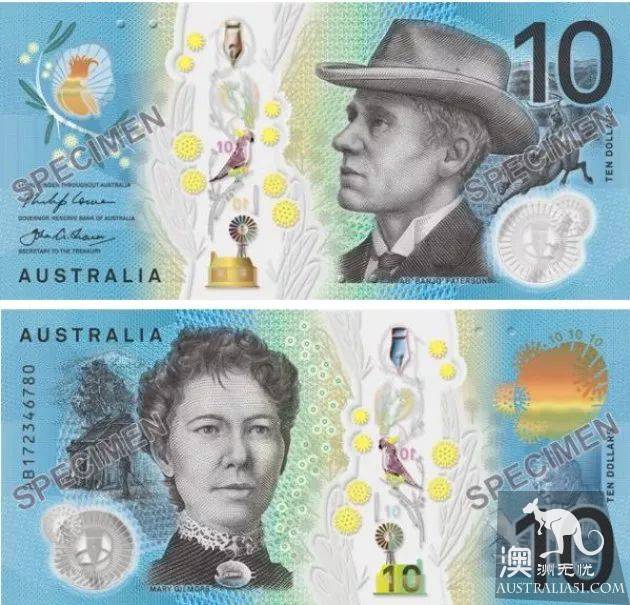
The main tone of $10 is blue. The real character is poet and writer Banjo Patterson (BanjoPaterson). Banjo Patterson was born in February 1864 near Orange, New South Wales, of Scottish descent. Banjo Patterson began working as a clerk in a law firm at the age of 16.
In 1895, Banjo Patterson wrote a famous poem, Matilda, about a homeless man being hunted down by the police for stealing a sheep. The song has been sung for more than 100 years, known as Australia's informal national anthem. His long poem from Snow River is even more praised as the Australian spirit of praise. The Sydney Olympic Games in 2000 marked the beginning of the opening ceremony with the image of a knight described in Banjo Patterson's long poem Snow River Man. The closing ceremony ended with a song written by his short poem, Matilda, with Australian flavor.
Banjo Patterson died in 1941 at a private hospital in Sydney at the age of 77. Banjo Patterson wrote numerous essays and poems throughout his life and became one of the most famous poets and writers in Australian history.
On the back of the Australian dollar is a famous Australian writer and poet, Countess Mary Gilmer, (Dame MaryGilmore)., who was born on August 16, 1865 in Courtavara, New South Wales, and became a primary school teacher in 1883.
After 1890, Australia's radical nationalist ideology made Gilmer's desire for social reform even stronger, and she wrote many articles calling for social reform under various pseudonyms. Influenced by the socialist utopian ideals, she joined the New Australia Movement to write articles for the group's magazines.
In 1908, at the invitation of the editor-in-chief of the Australian Workers, Gilmer began writing for the newspaper's women's column. Through this column, Gilmer called for a range of social and economic reforms, including the right to vote for women, pensions, child welfare and poverty alleviation and equitable treatment of indigenous people. She wrote the column for more than 20 years.
In 1937, as a household name in Australia, she was named Jazz by the British Empire, becoming Australia's first woman to receive this award.
On December 3, 1962, Gilmer died. Three days later, Australia held a state funeral for her.
$5

The Australian dollar's dominant tone is pink and a portrait of Queen Elizabeth II, theoretically Australia's supreme ruler. In theory, the Queen's field now includes, in addition to the United Kingdom, Canada, Australia, New Zealand, Jamaica, Barbados, Bahamas, Grenada, Papua New Guinea, Solomon Islands, Tuvalu, Saint Lucia, Saint Vincent and the Grenadines, Politz, Antigua and Barbuda, Saint Lucia and Neves together, has a total population of more than 120 million. In fact, however, she basically does not care about politics, and leads a life of supremacy.
On the back of the $5 is the Australian National Building, built in 1988 at a cost of A $1.1 billion, the venue for meetings of the Australian Senate and House of Representatives. The background is the Capitol Hill planning and design plan.
This series of articles is transferred from the WeChat account (goldmate_group) of China United Group in Goldmate.

